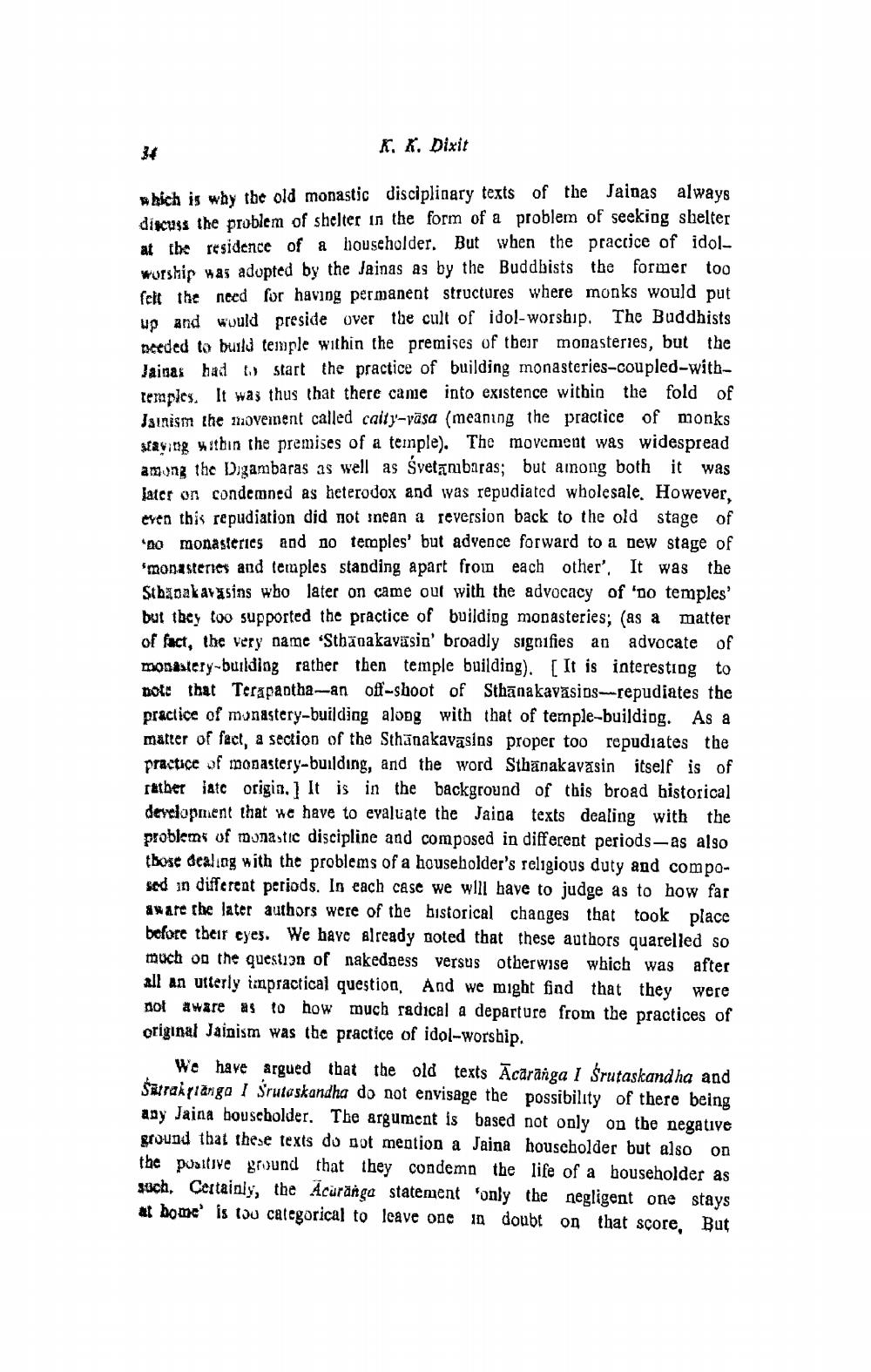________________
K. X. Dixit
which is why the old monastic disciplinary texts of the Jainas always discuss the problem of shelter in the form of a problem of seeking shelter at the residence of a householder. But when the practice of idolworship was adopted by the Jainas as by the Buddbists the former too felt the need for having permanent structures where monks would put up and would preside over the cult of idol-worship. The Buddhists needed to build temple within the premises of their monasteries, but the Jaigas had start the practice of building monasteries-coupled-withtemples. It was thus that there canie into existence within the fold of Jainism the rovement called calty-vasa (meaning the practice of monks saving mithin the premises of a temple). The movement was widespread among the Digambaras as well as svetīnbaras; but among both it was later on condemned as heterodox and was repudiated wholesale. However, even this repudiation did not snean a reversion back to the old stage of *20 monasteries and no temples' but advence forward to a new stage of monasteries and temples standing apart from each other'. It was the Stboakavasins who later on came out with the advocacy of 'no temples' but they too supported the practice of building monasteries; (as a matter of fact, the very name "Sthanakavasin' broadly signifies an advocate of monastery-building rather then temple building). [ It is interesting to note that Terapantha---an off-shoot of Sthāna kavasios-repudiates the practice of monastery-building along with that of temple-building. As a matter of fact, a section of the Sthānakavasins proper too repudiates the practice of monastery-building, and the word Sthanakavasin itself is of father inte origin. It is in the background of this broad historical development that we have to evaluate the Jaisa texts dealing with the problems of munastic discipline and composed in different periods-as also those dealing with the problems of a householder's religious duty and composed in different periods. In each case we will have to judge as to how far aware che later authors were of the bistorical changes that took place before their eyes. We have already noted that these authors quarelled so much on the question of nakedness versus otherwise which was after all an utterly impractical question. And we might find that they were not aware as to how much radical a departure from the practices of original Jainism was the practice of idol-worship.
We have argued that the old texts Ācāranga I Śrutaskandha and Satraktäriga I Srutoskandha do not envisage the possibility of there being any Jaina bouscbolder. The argument is based not only on the negative ground that these texts do not mention a Jaina householder but also on the positive ground that they condemn the life of a householder as such. Certainly, the Acuranga statement 'only the negligent one stays at home' is to categorical to leave one in doubt on that score, But




